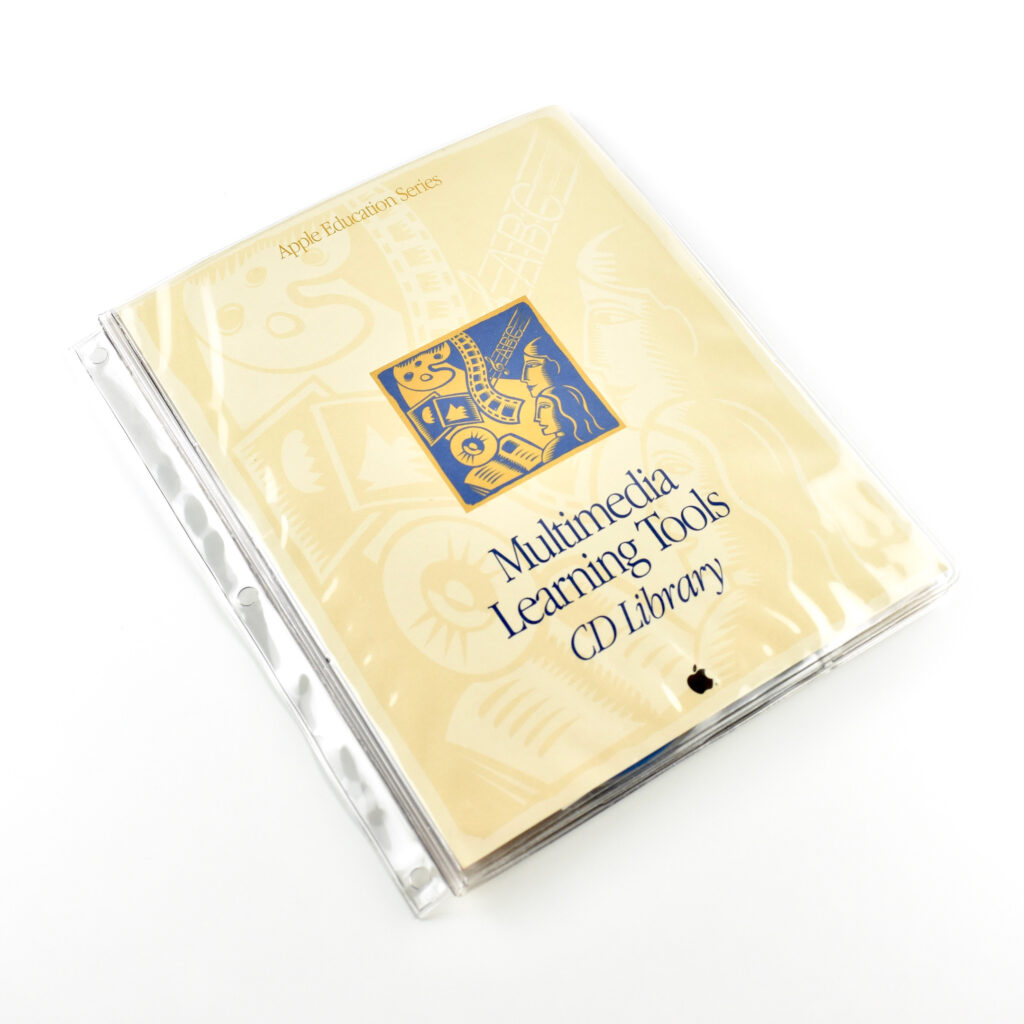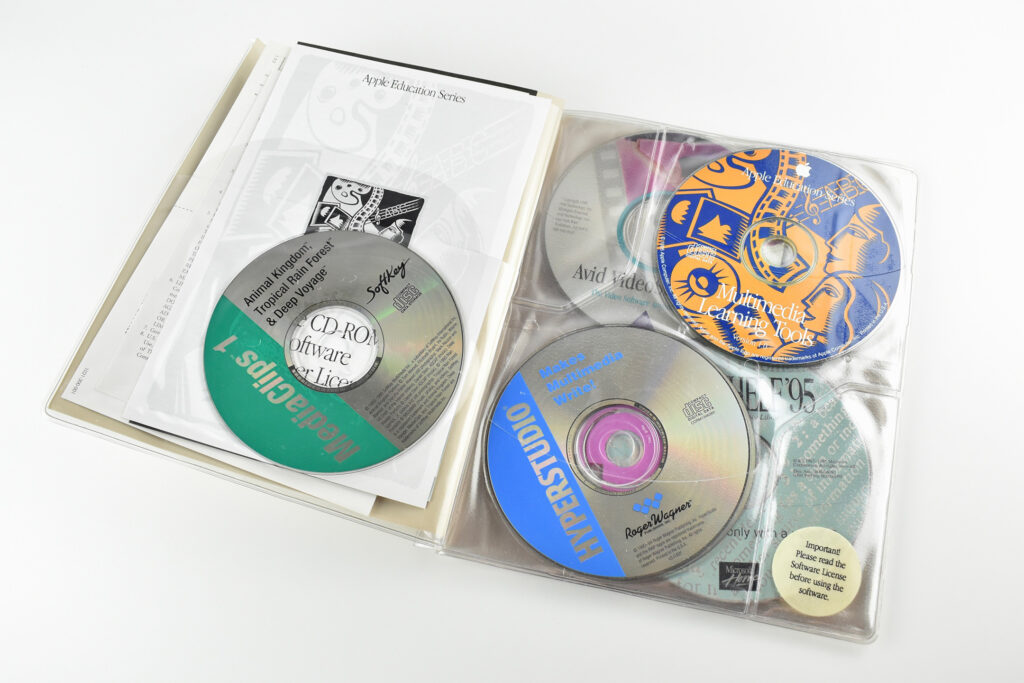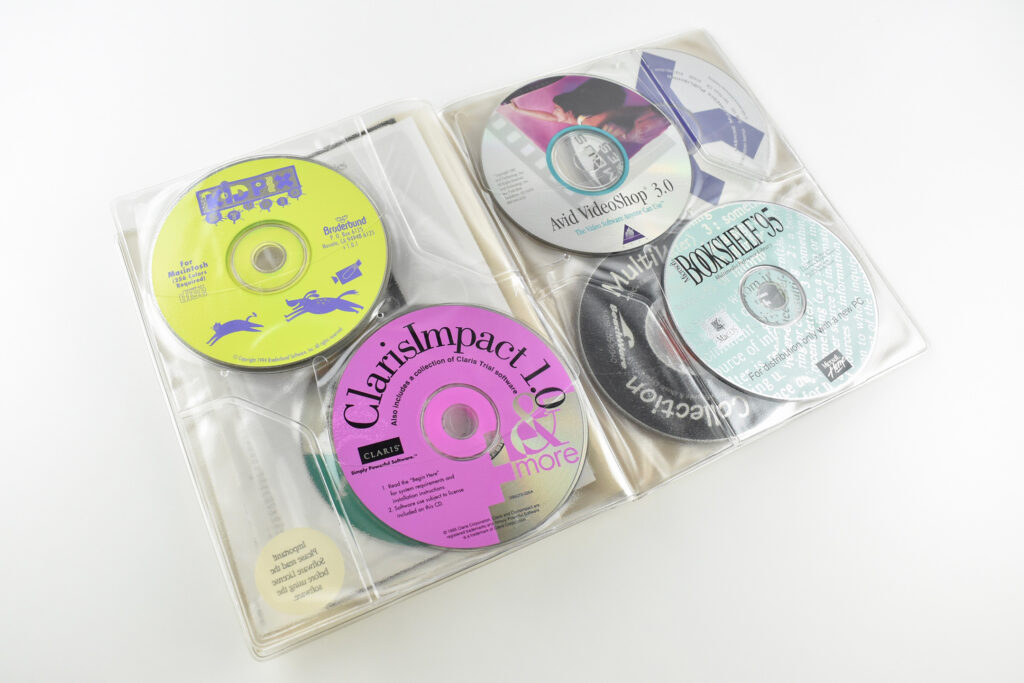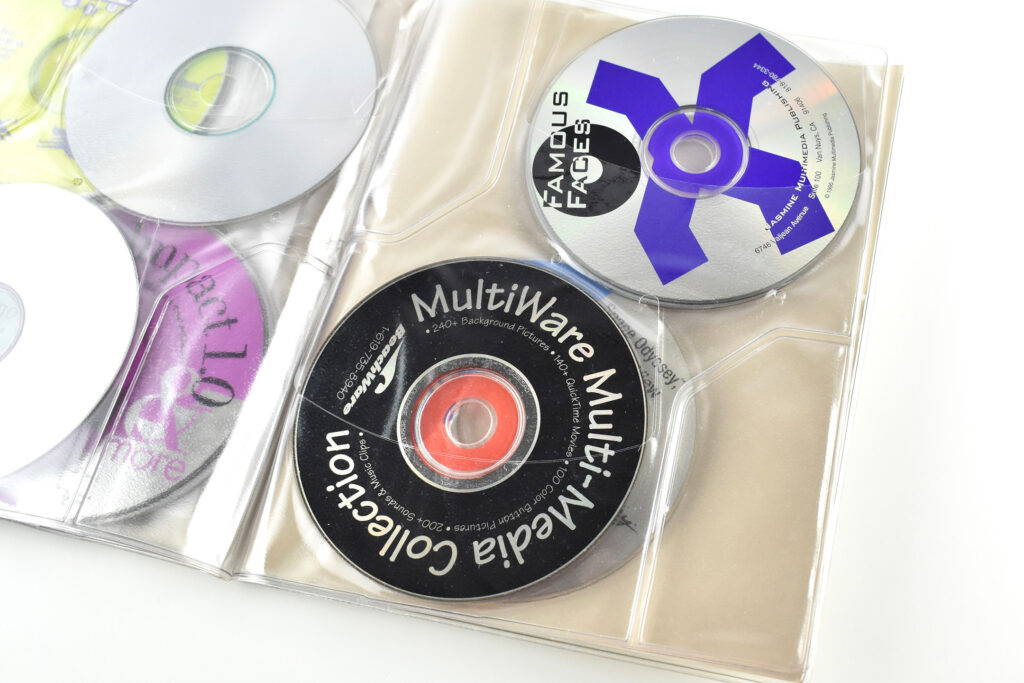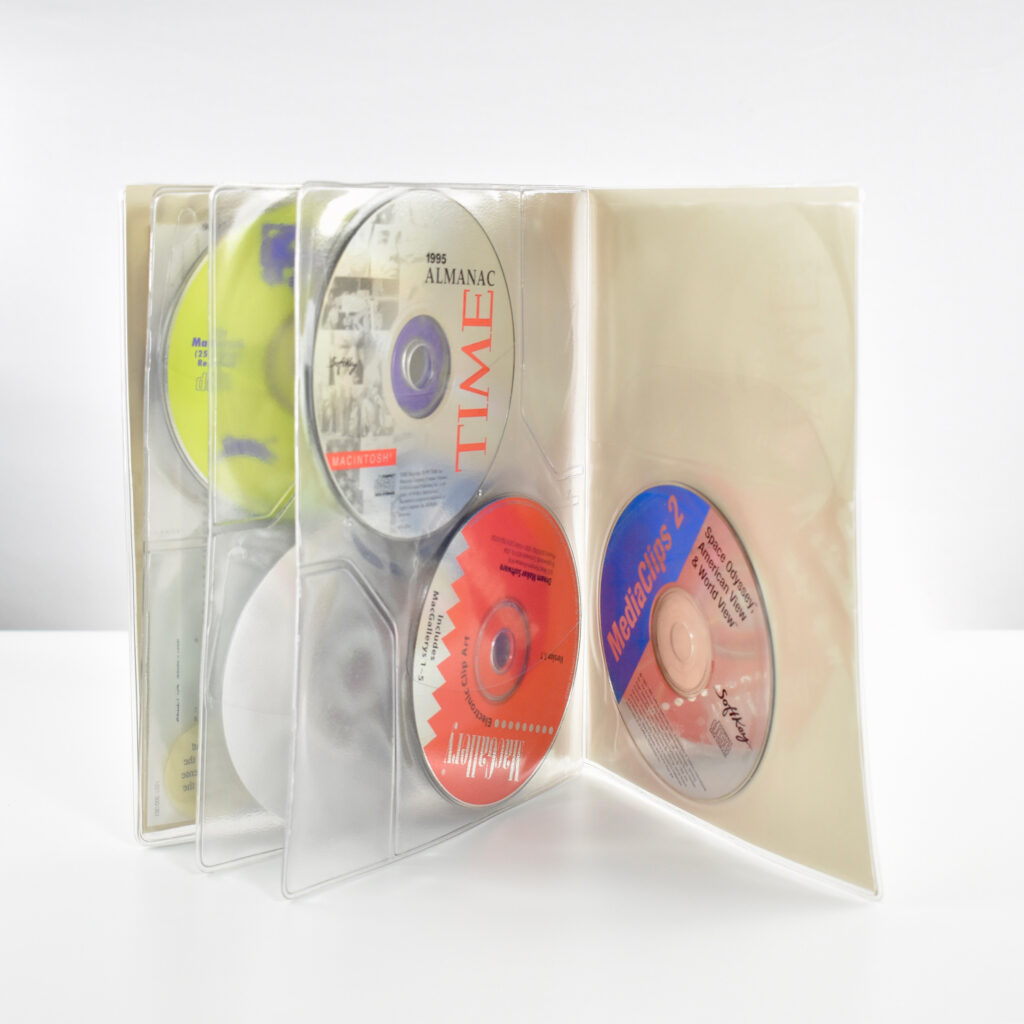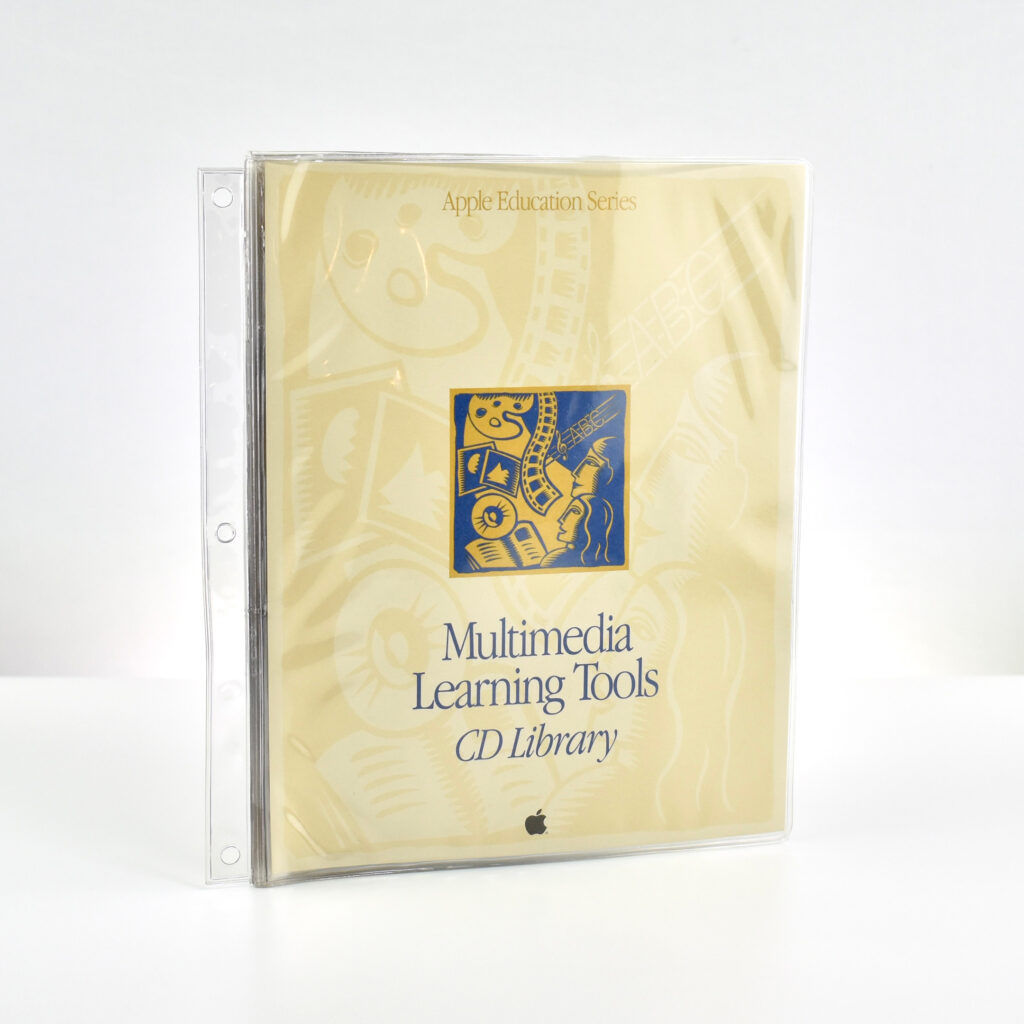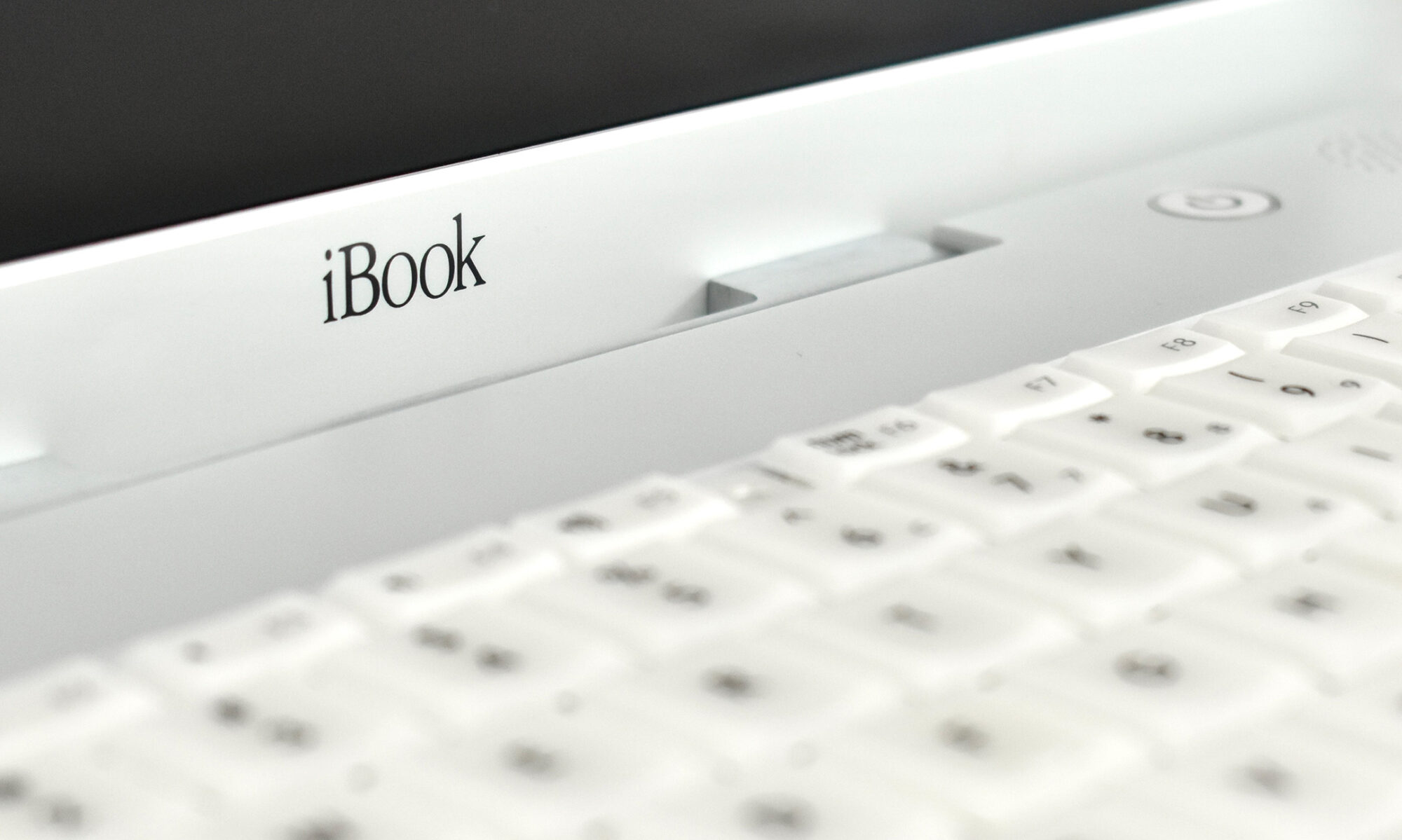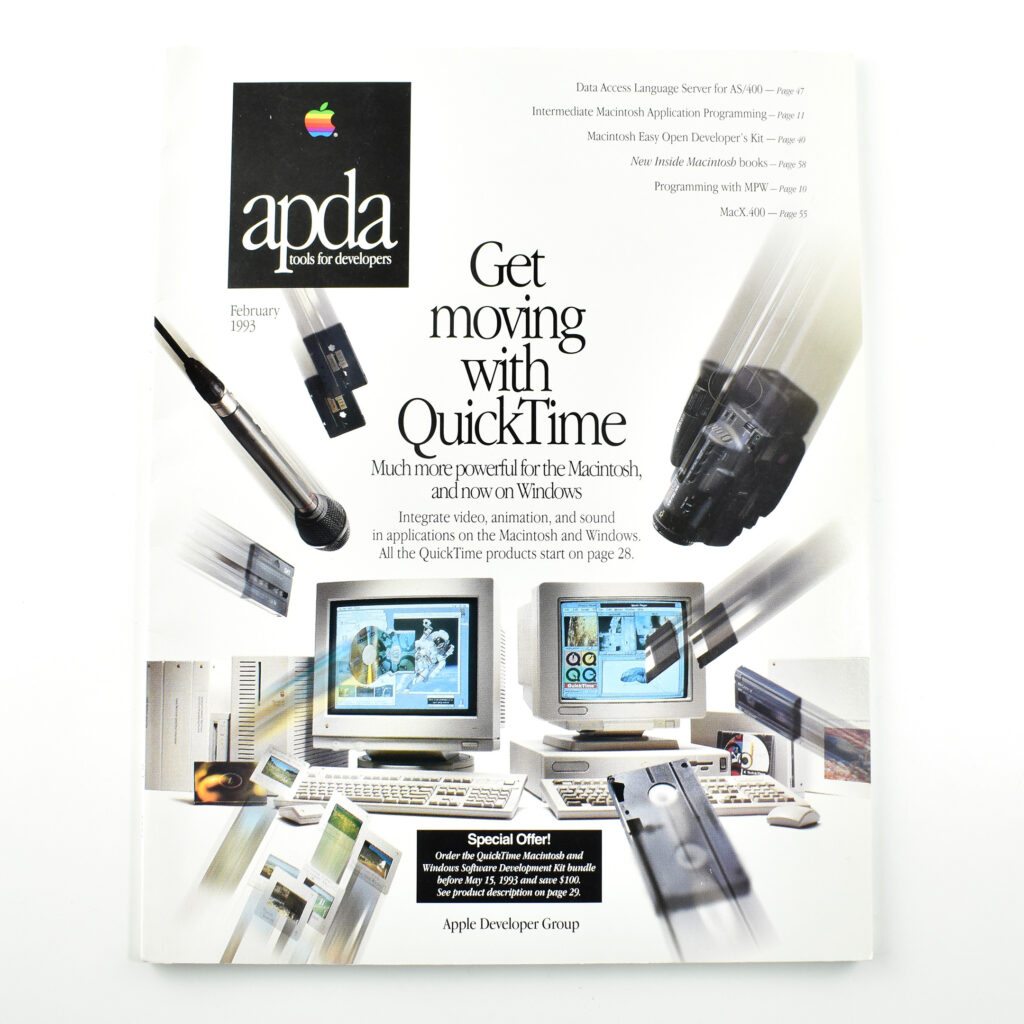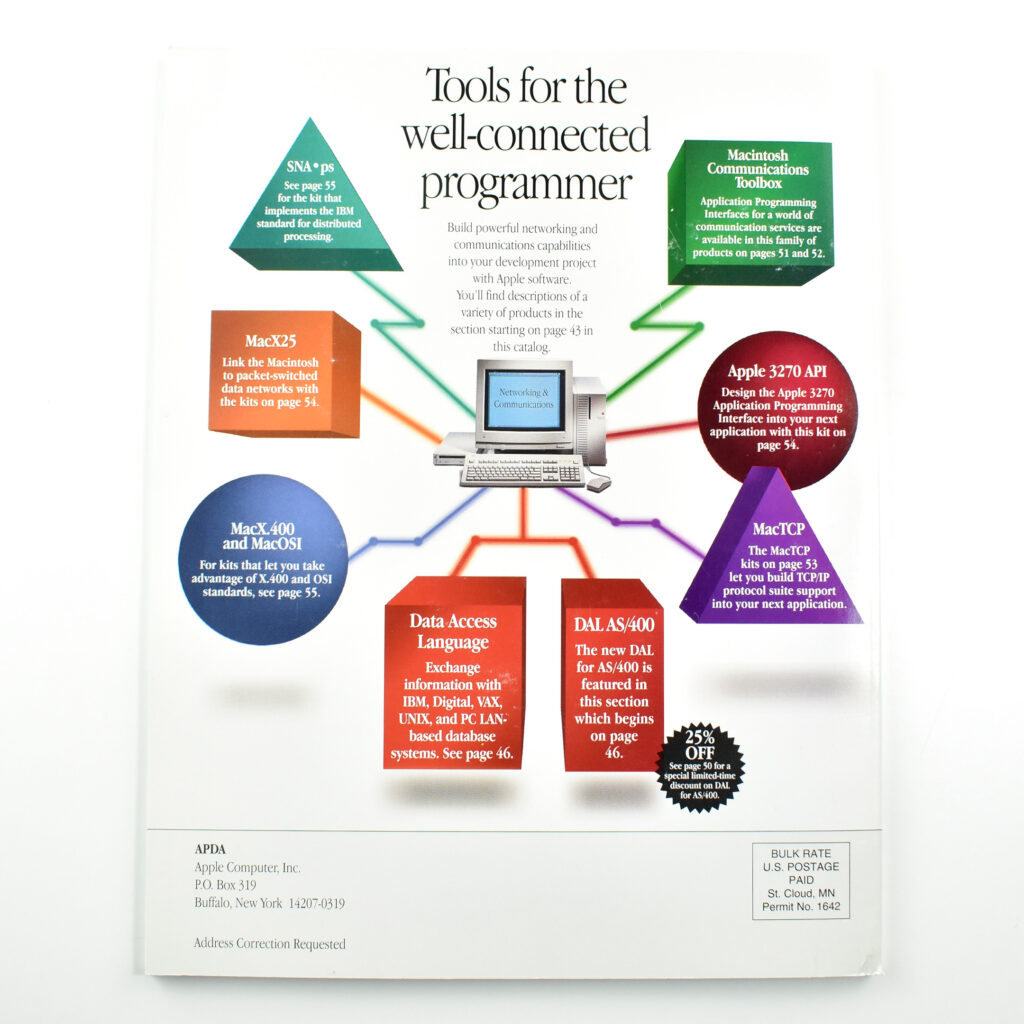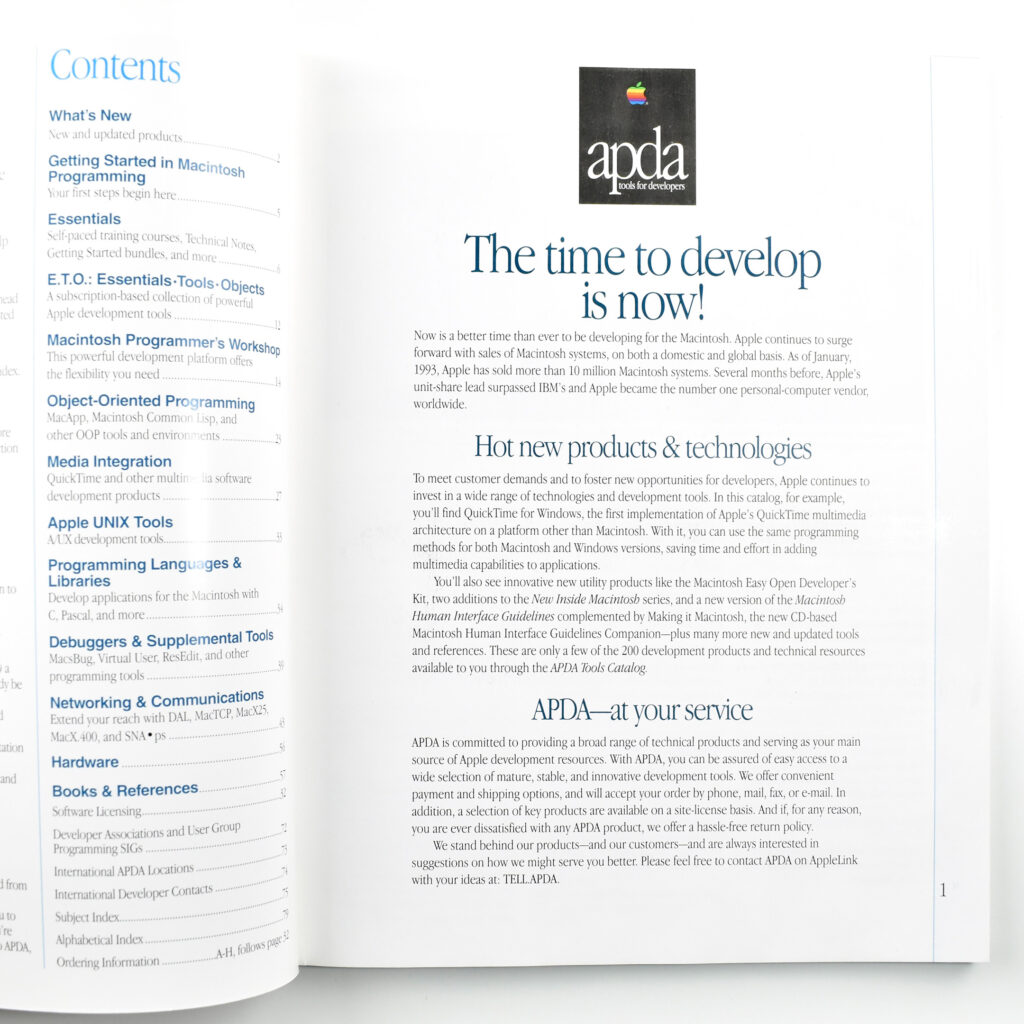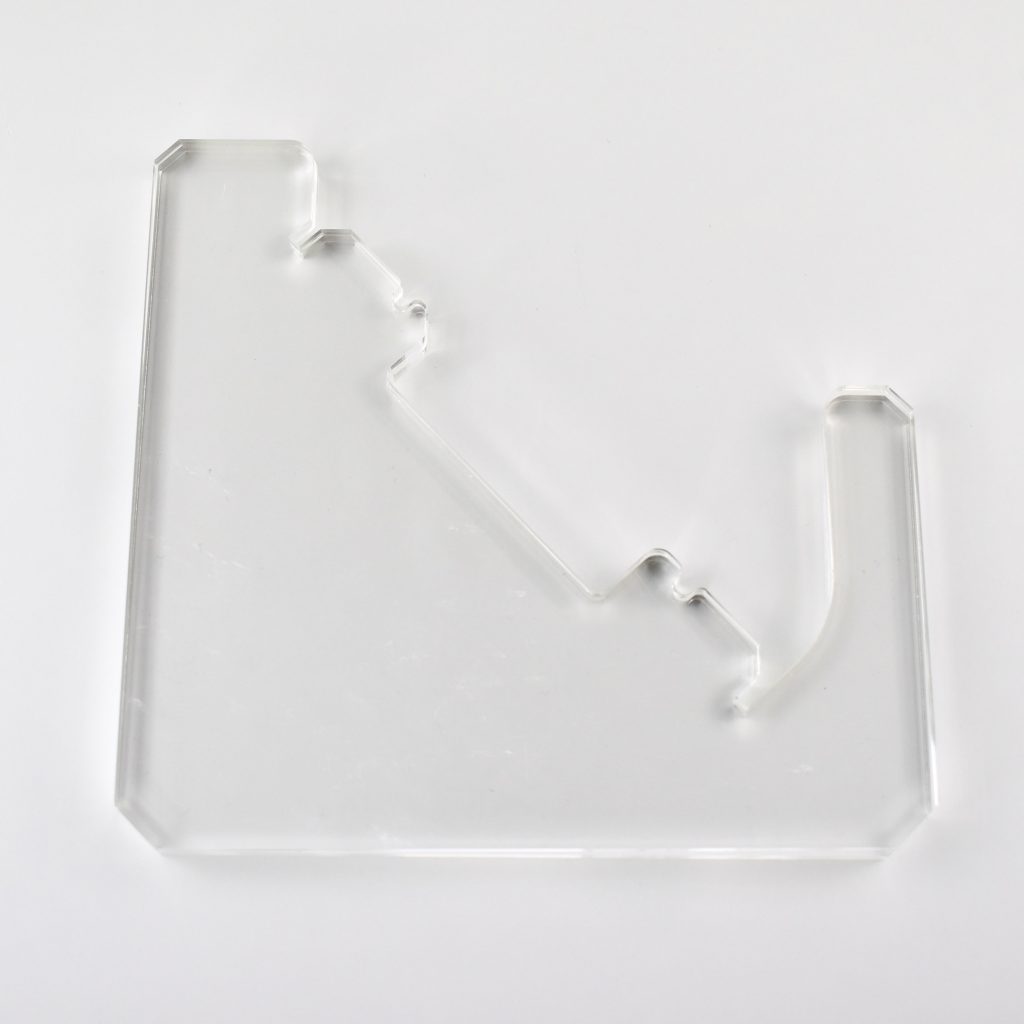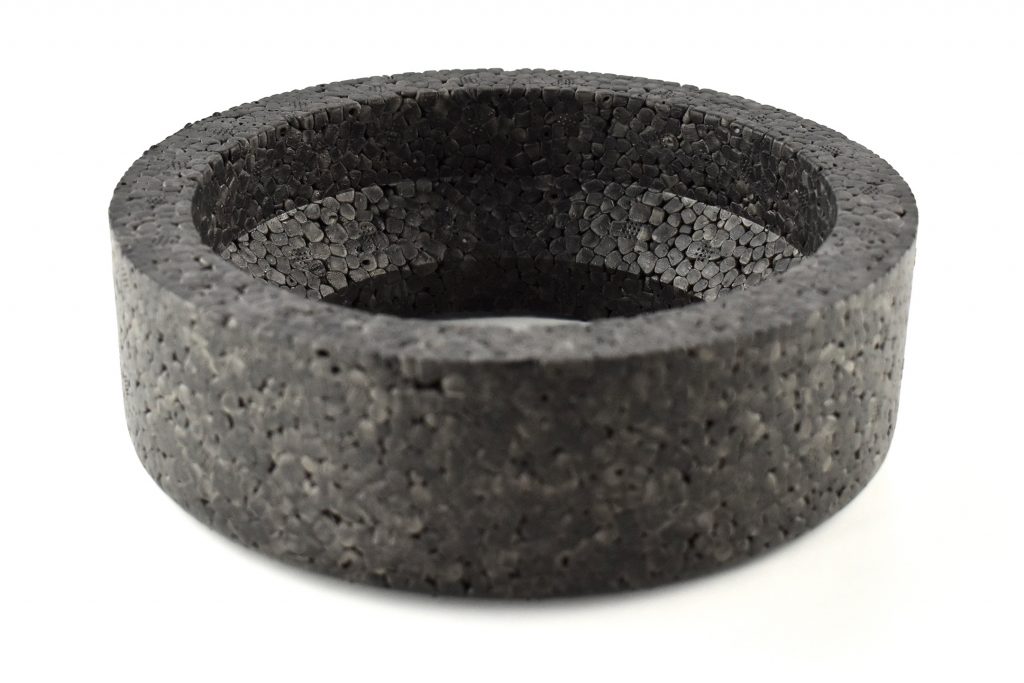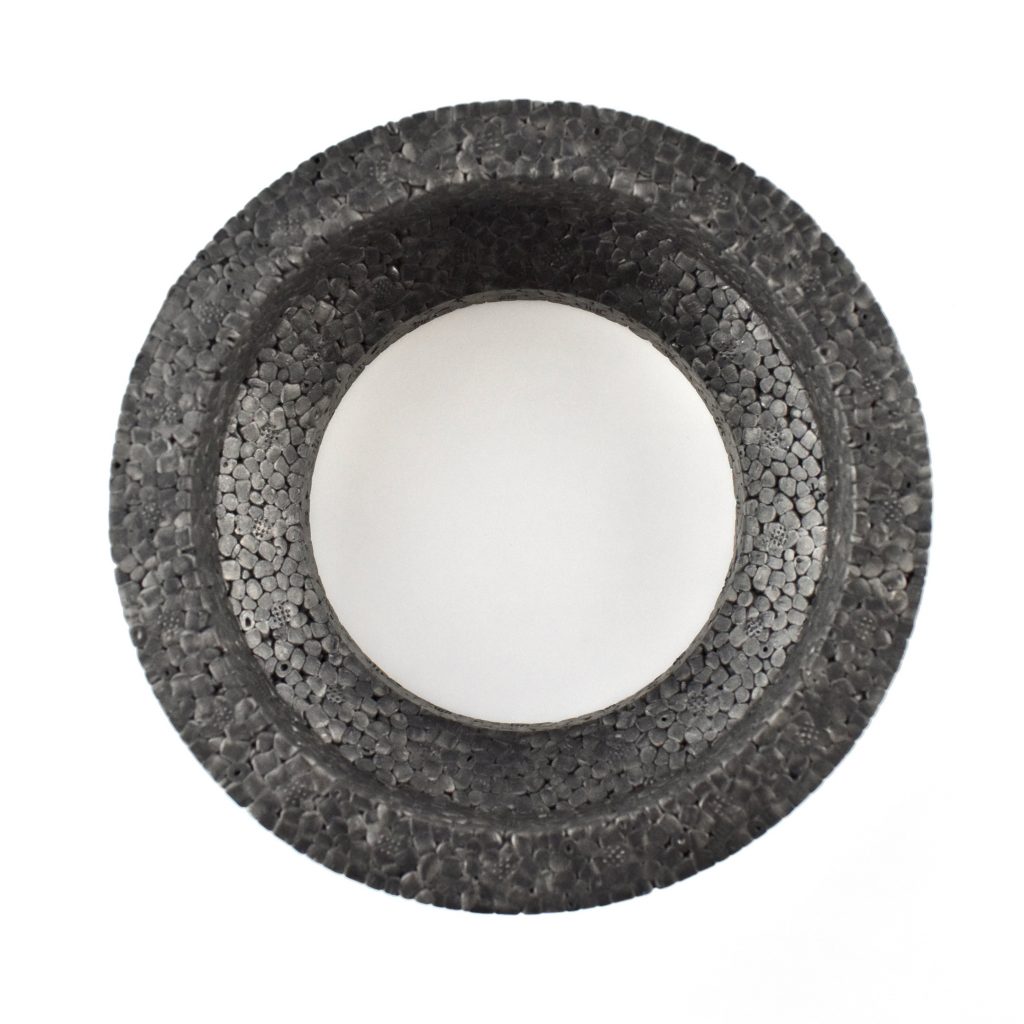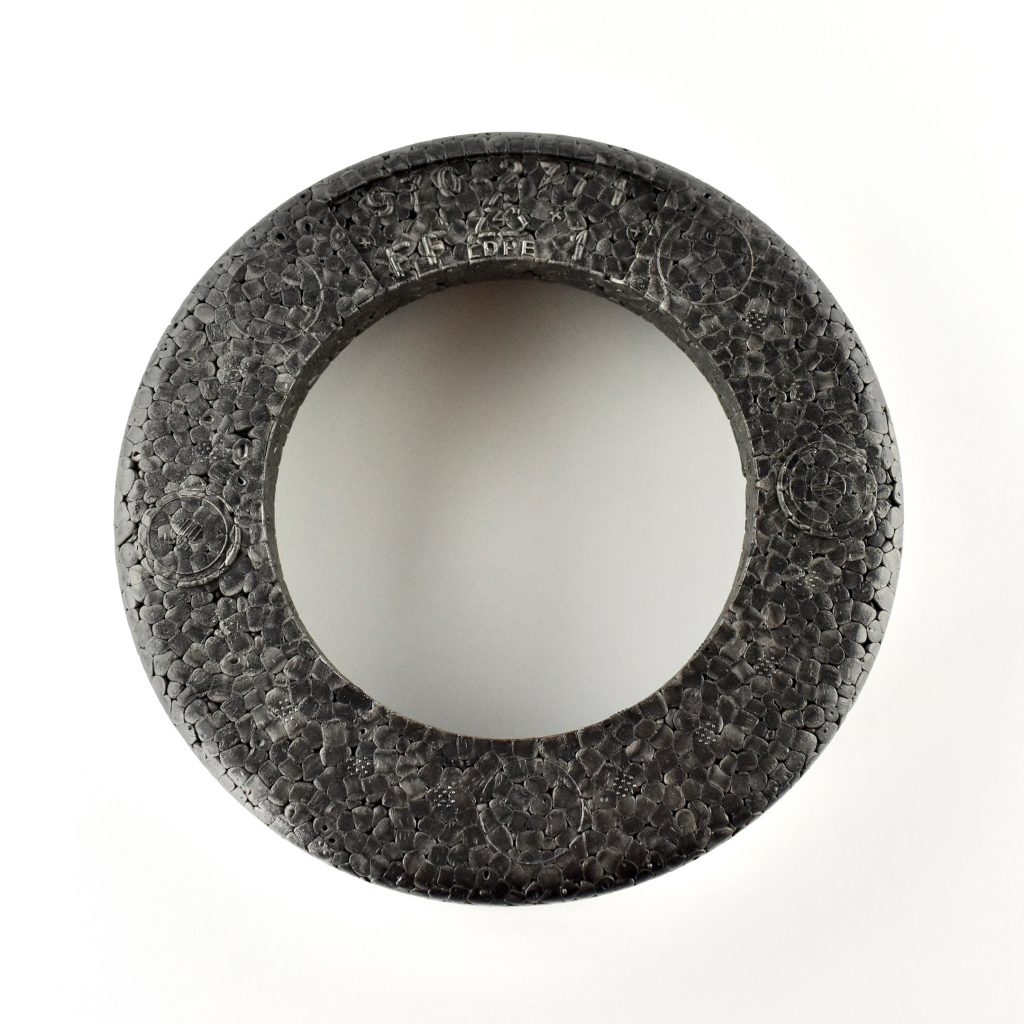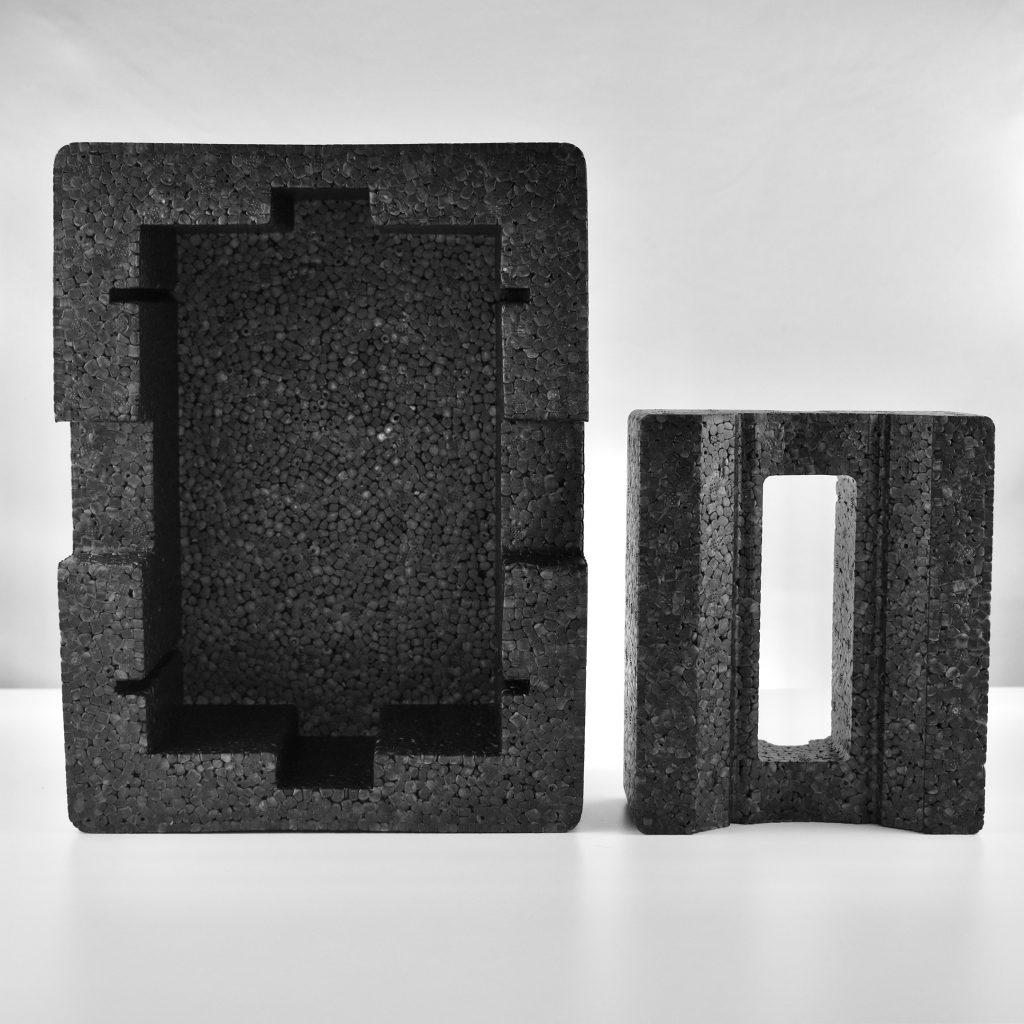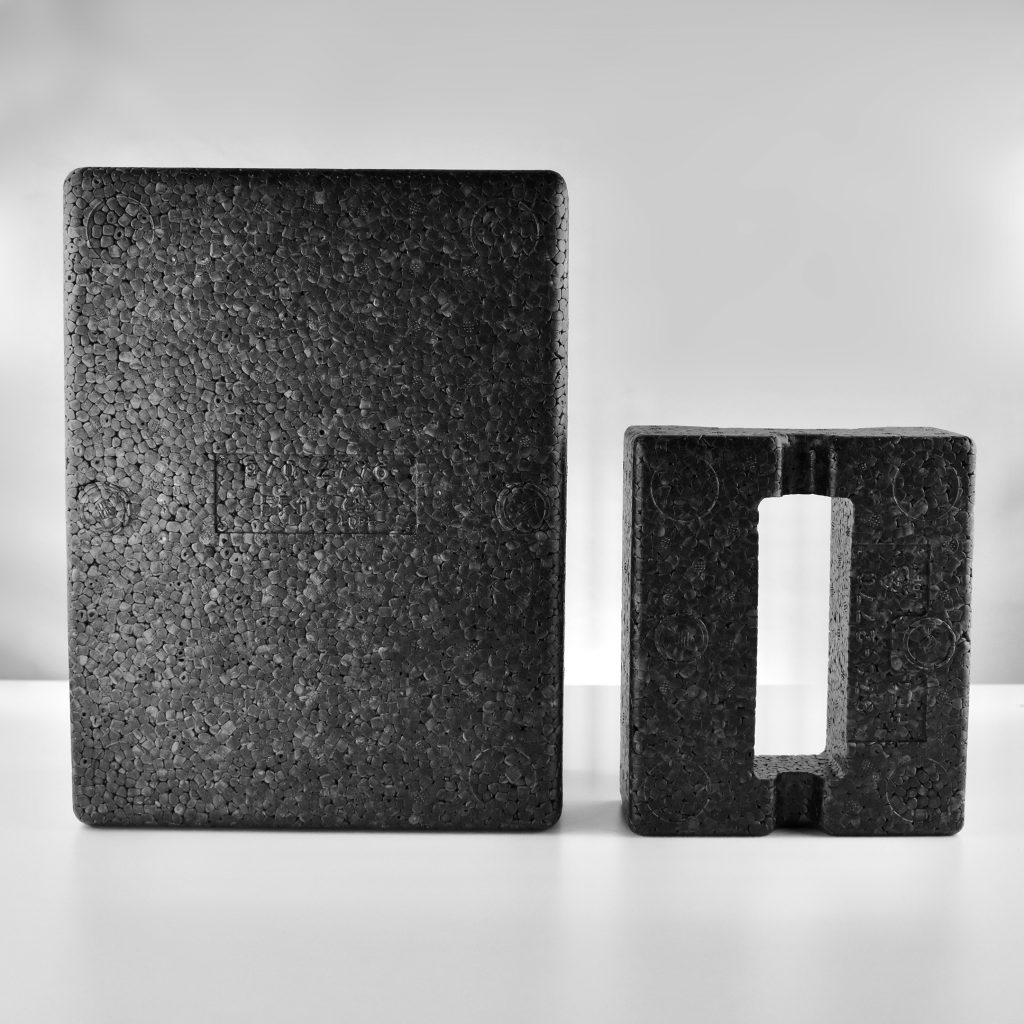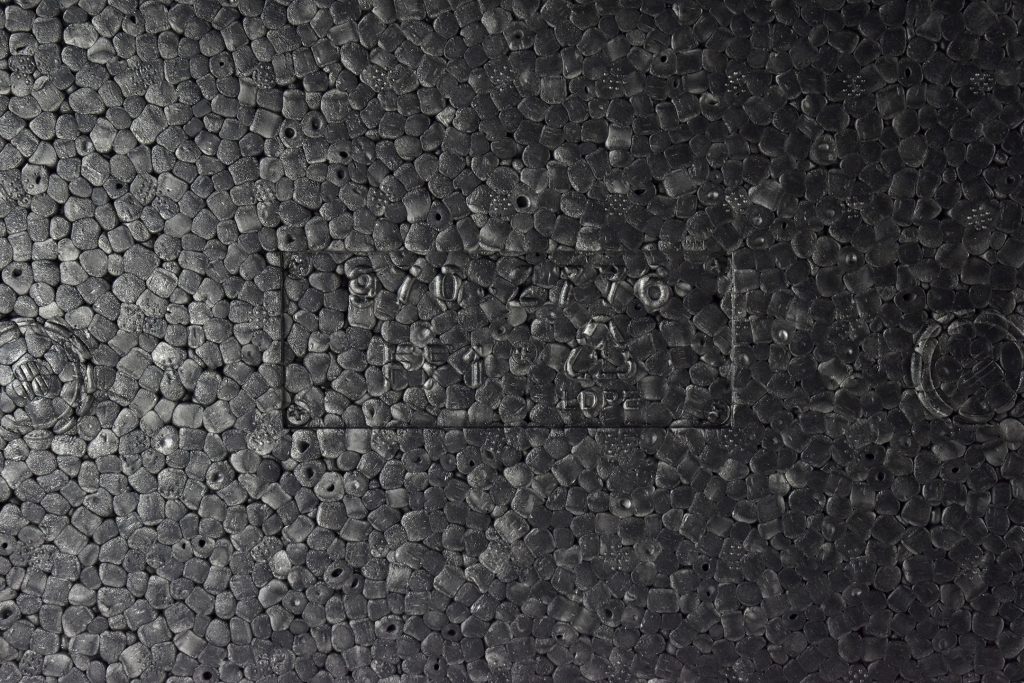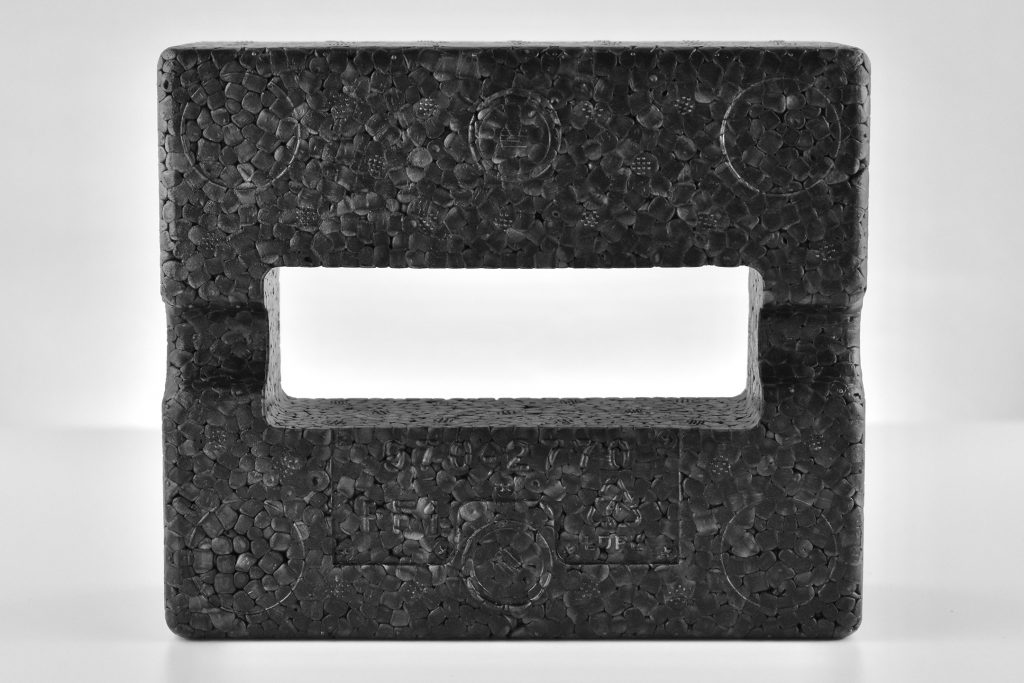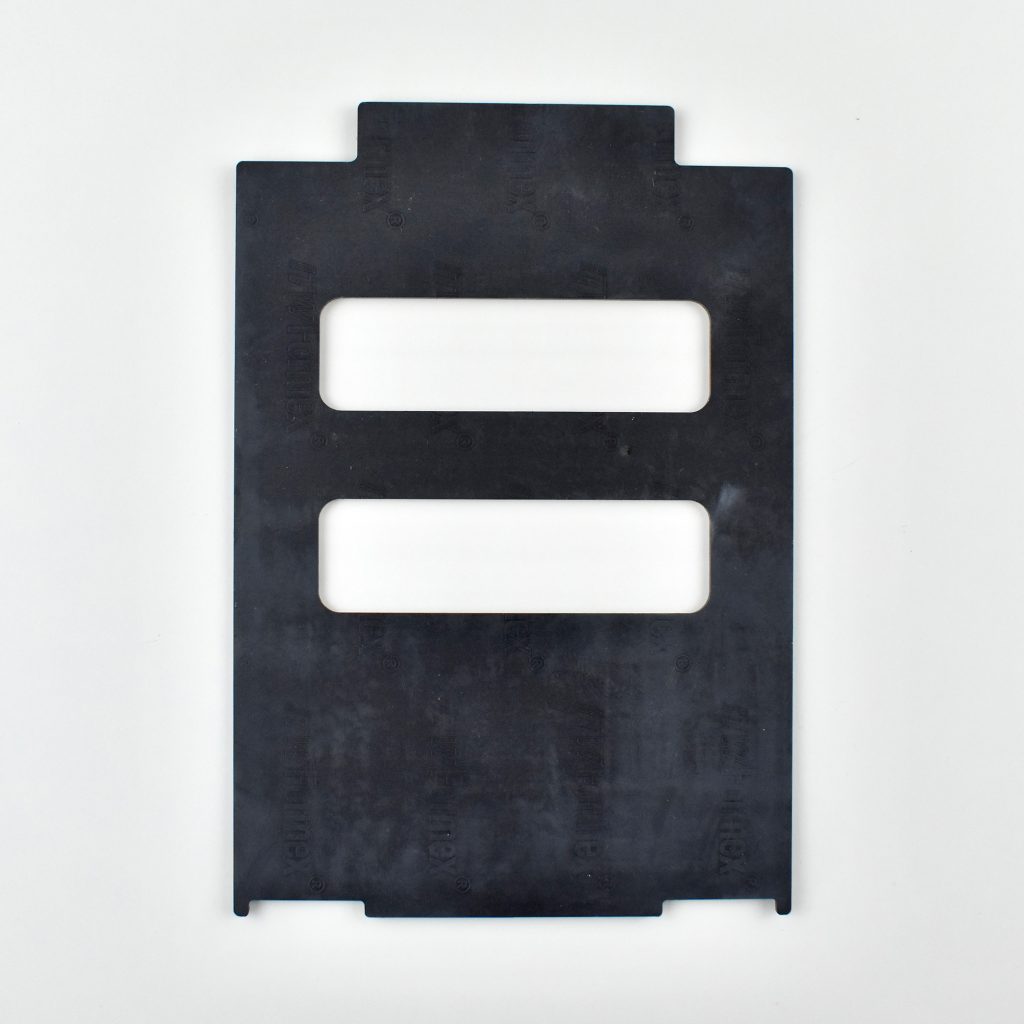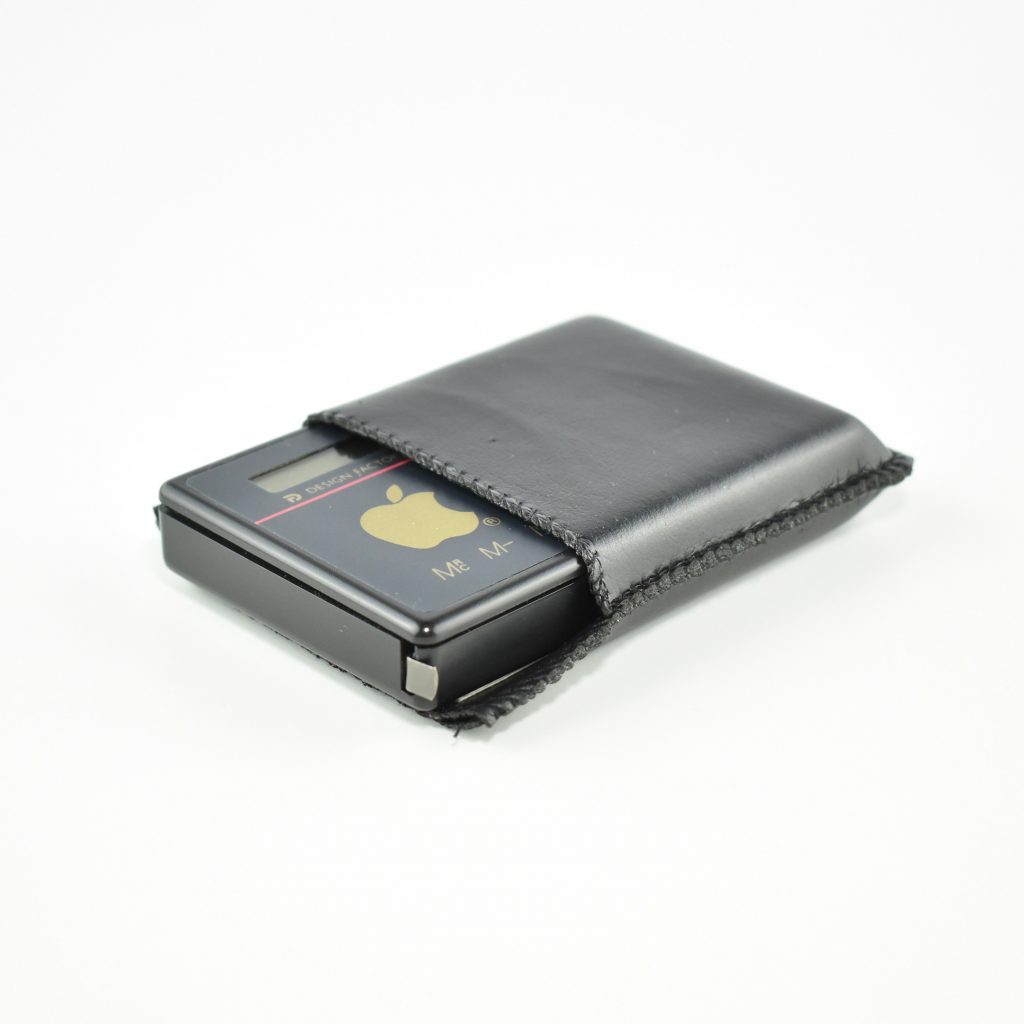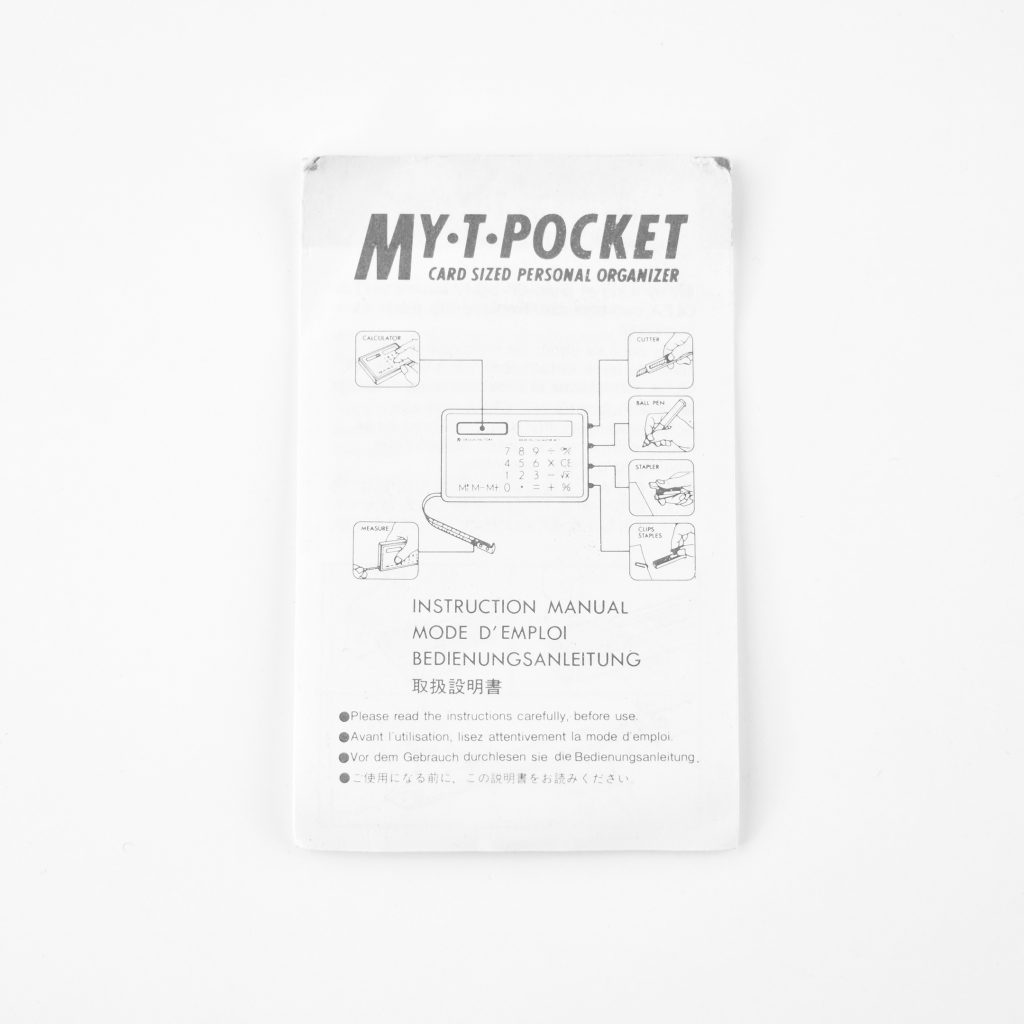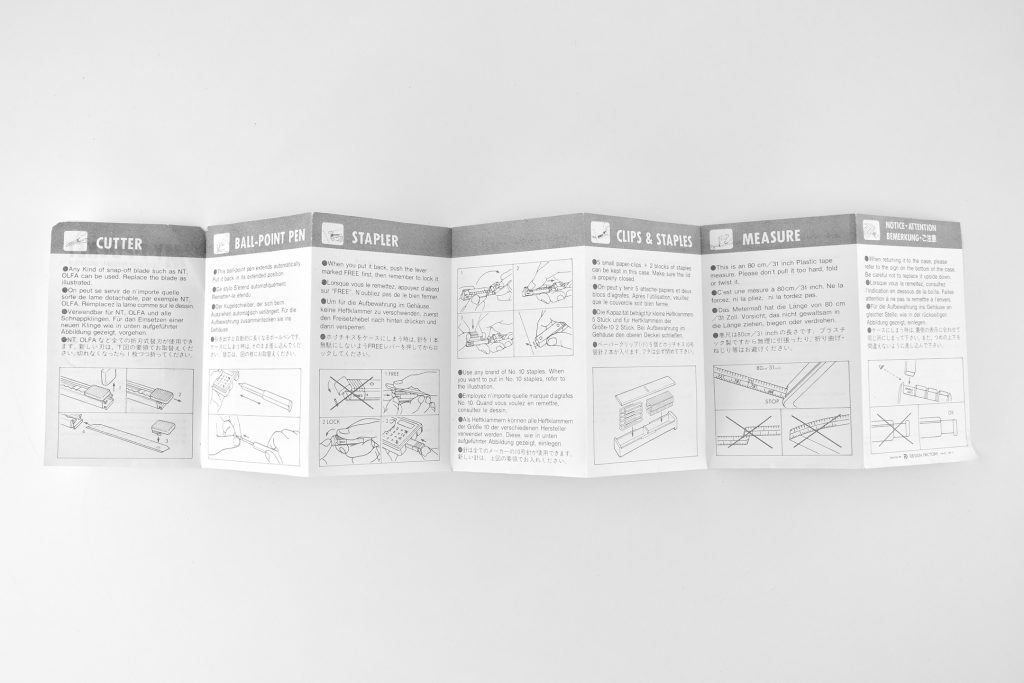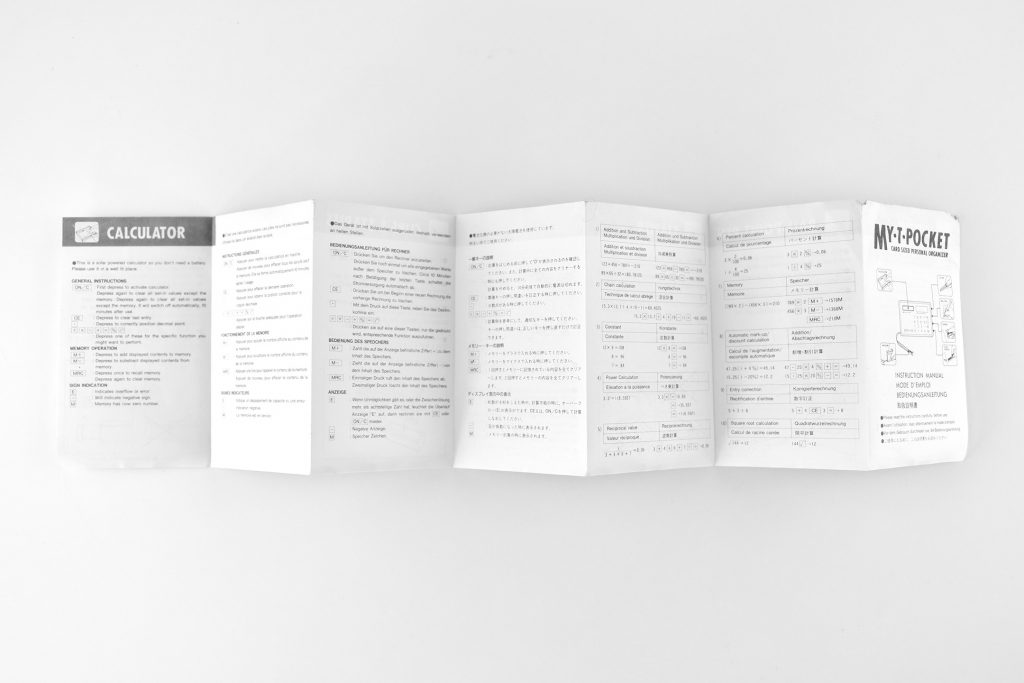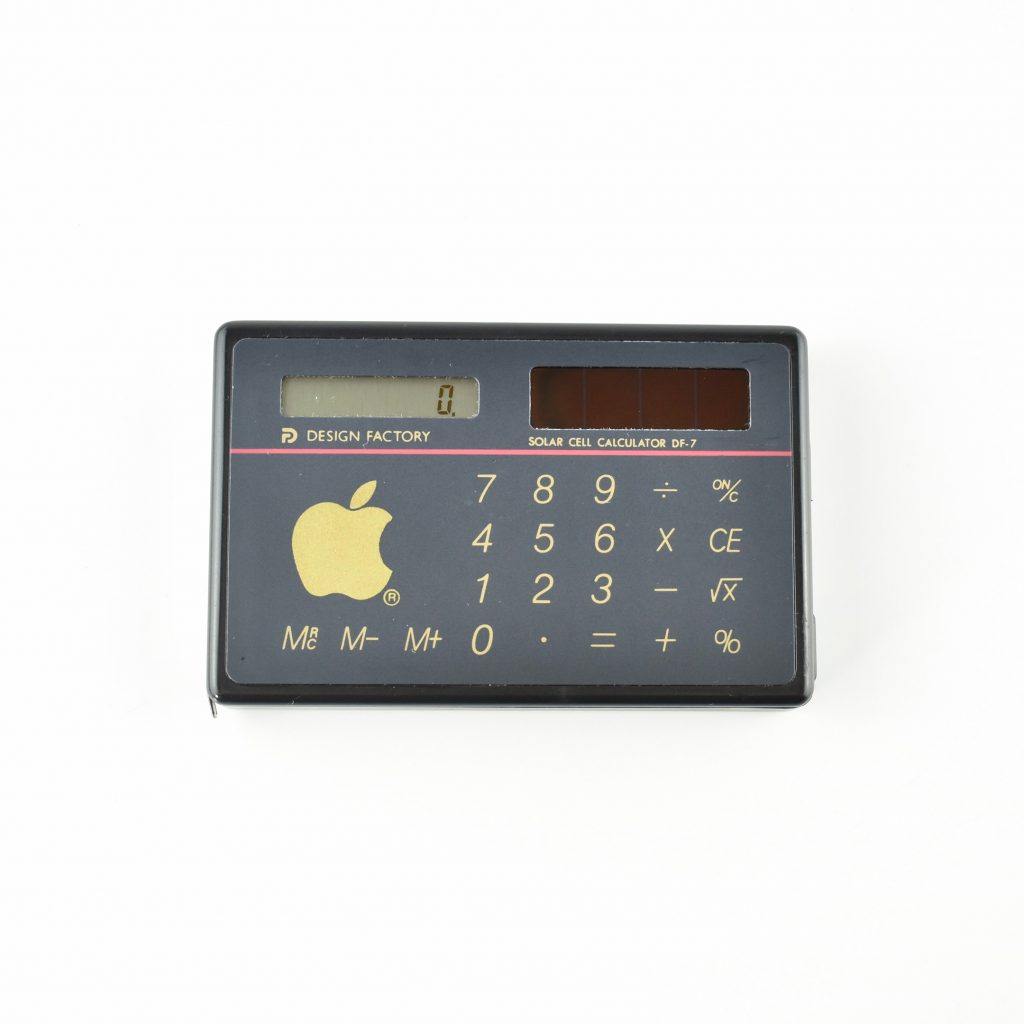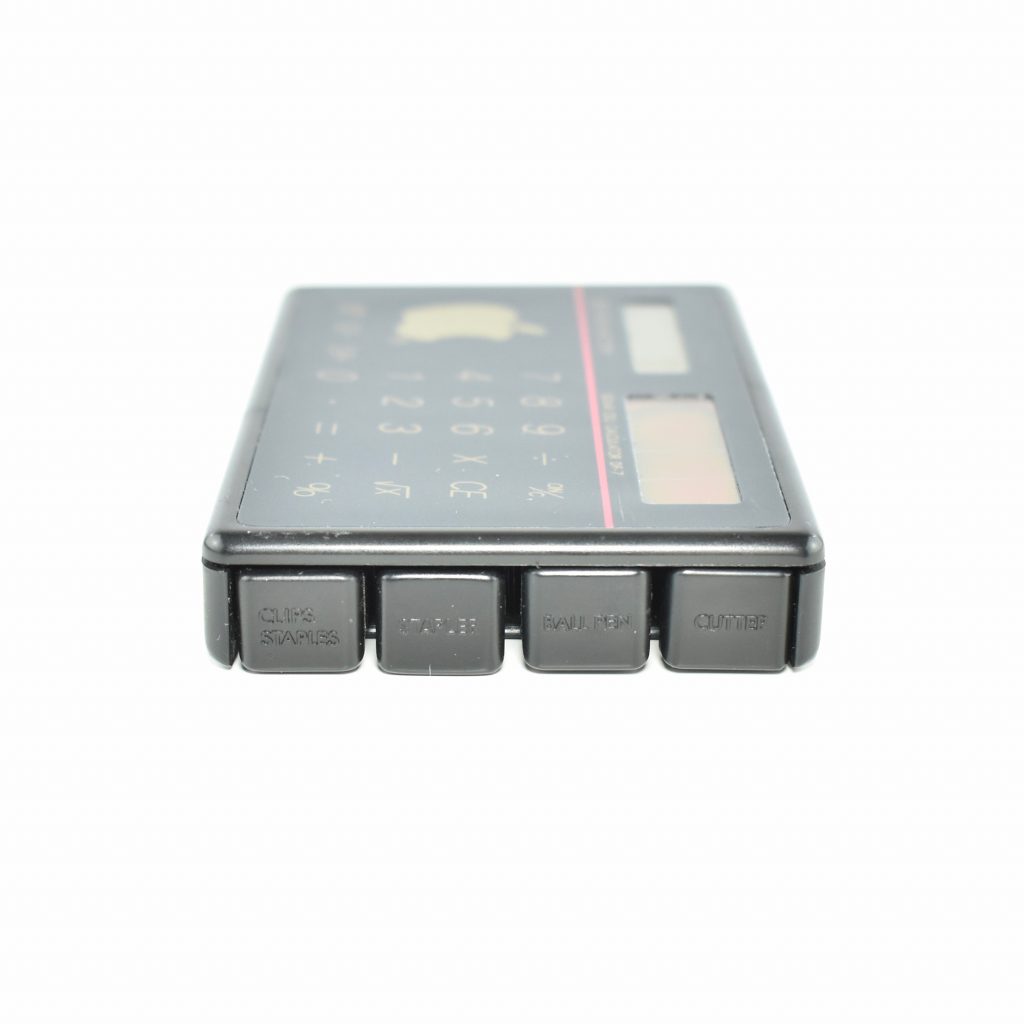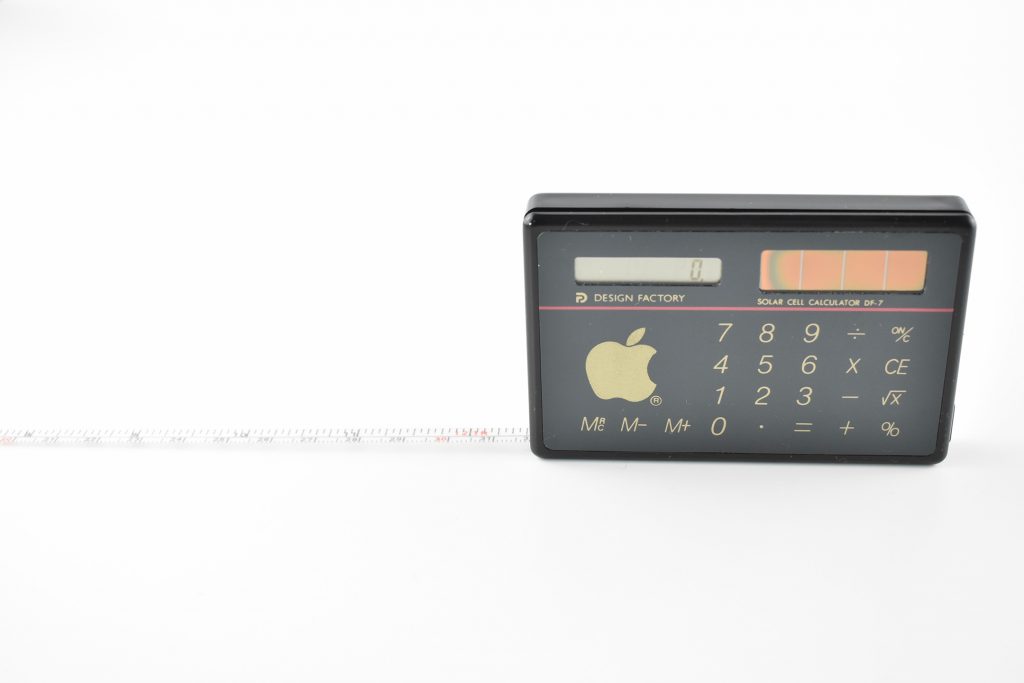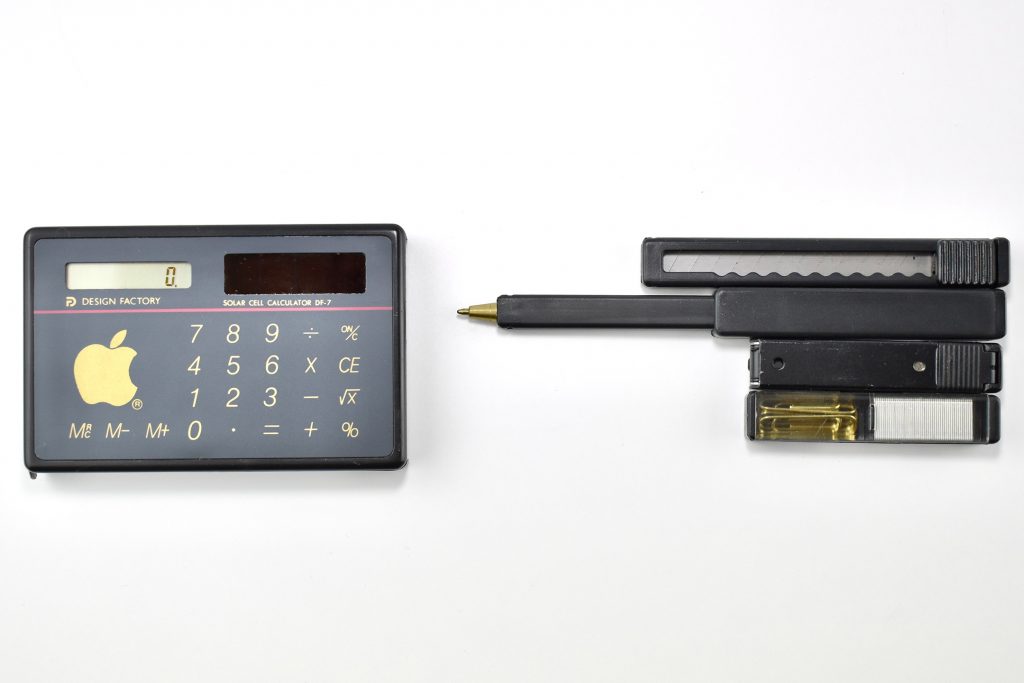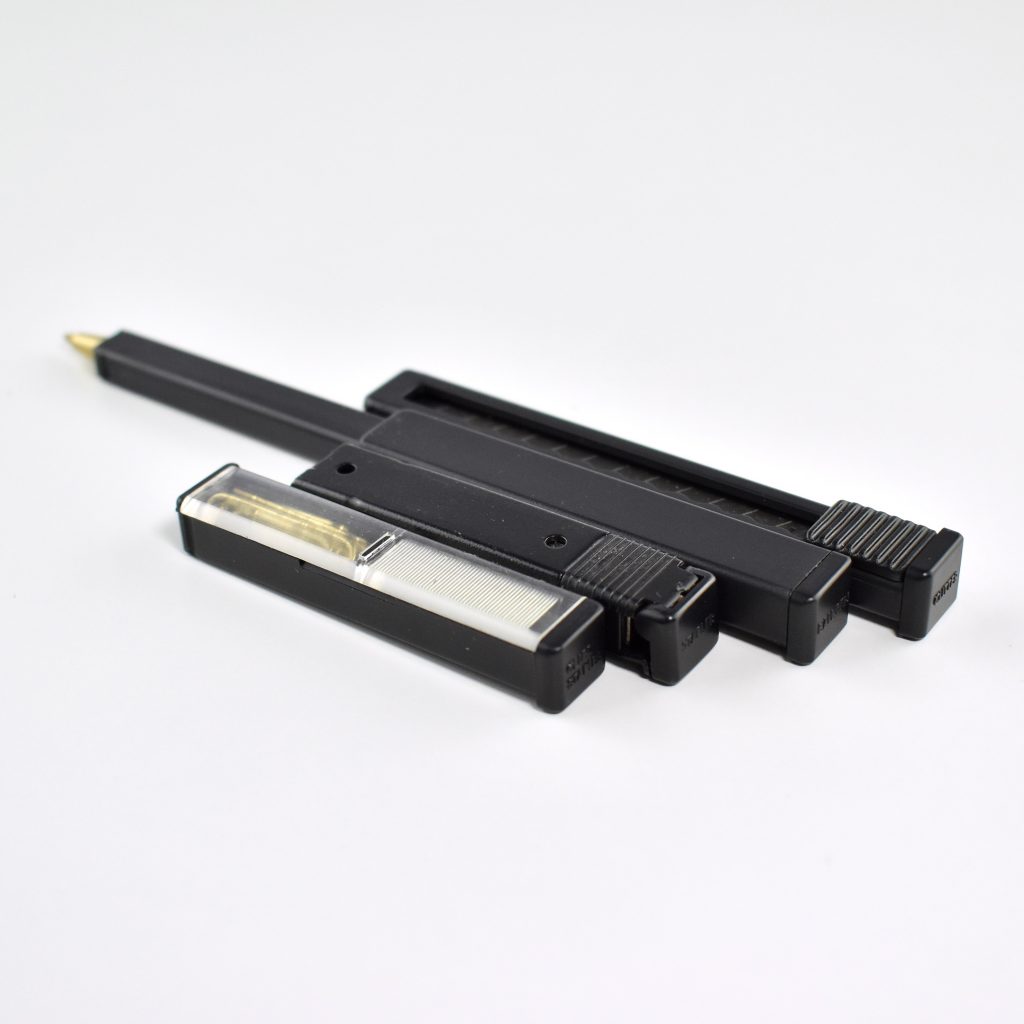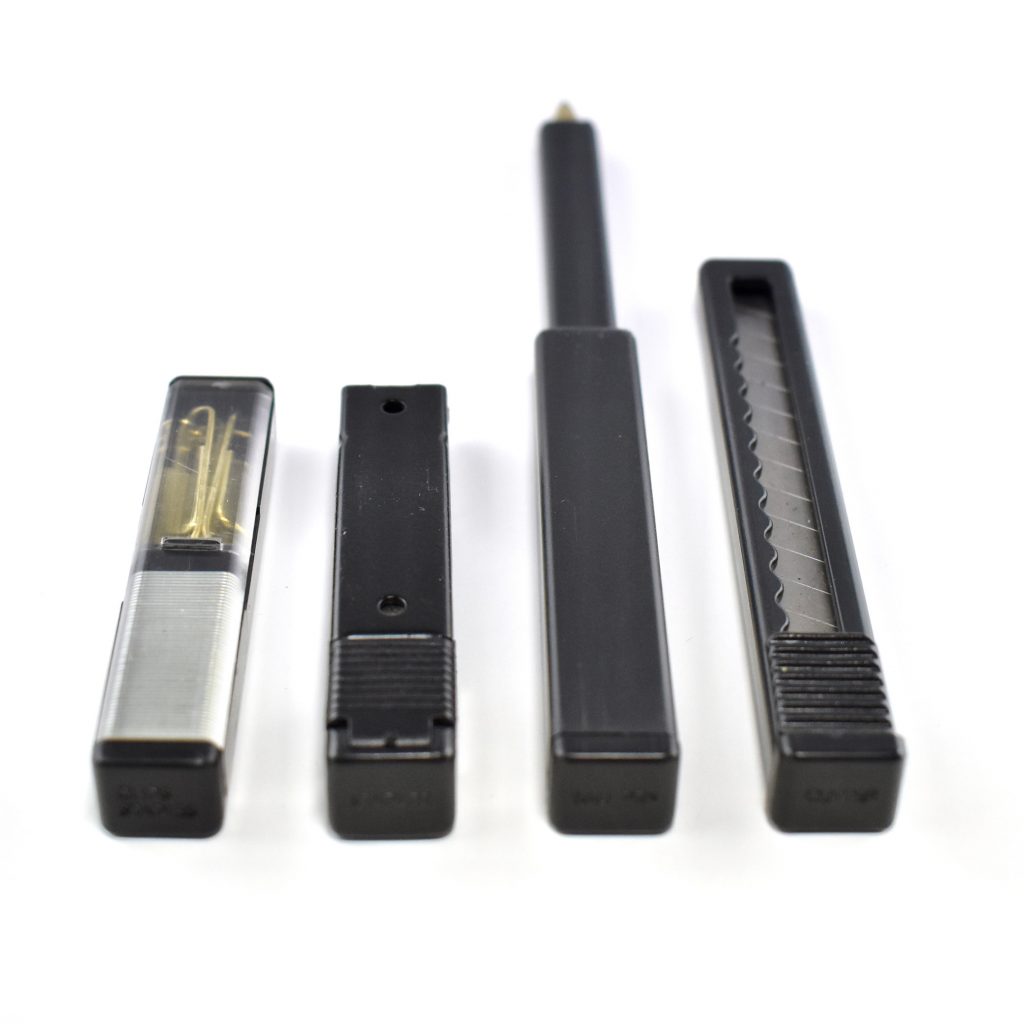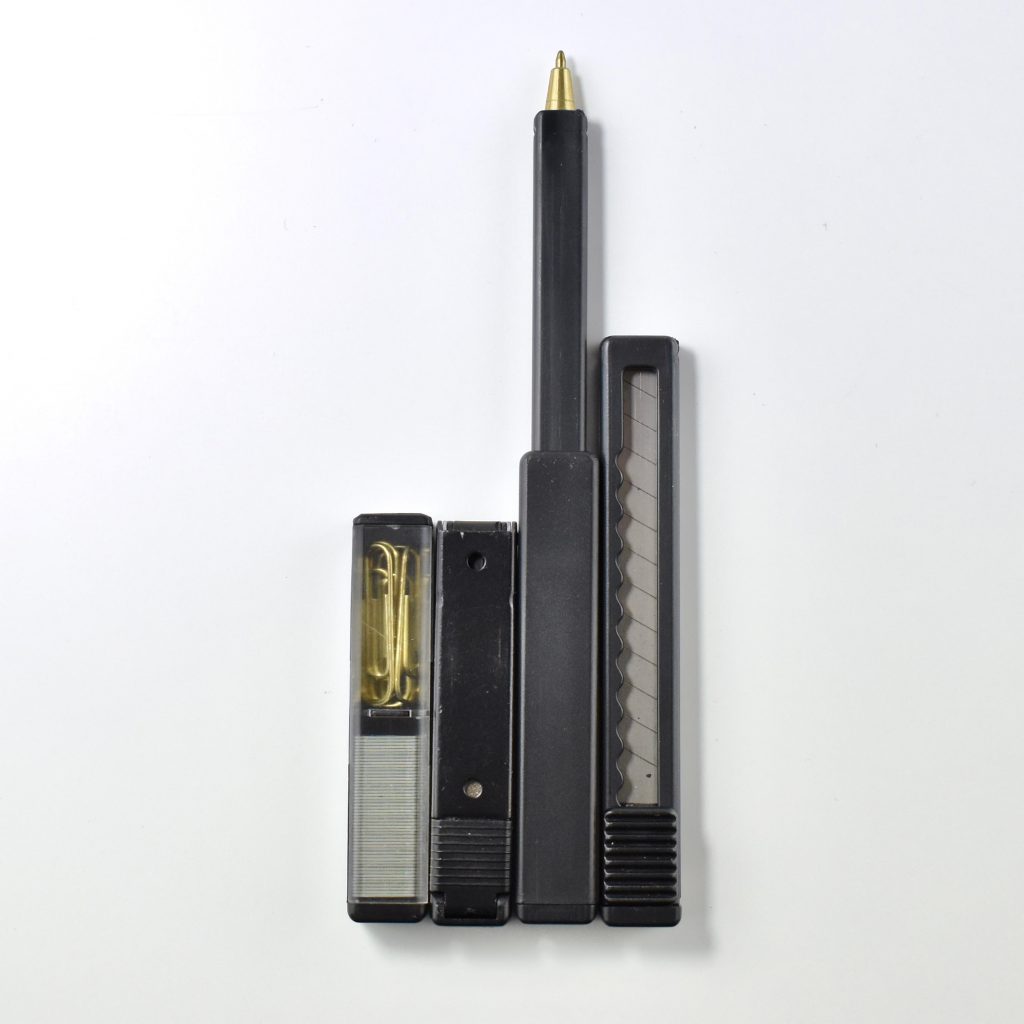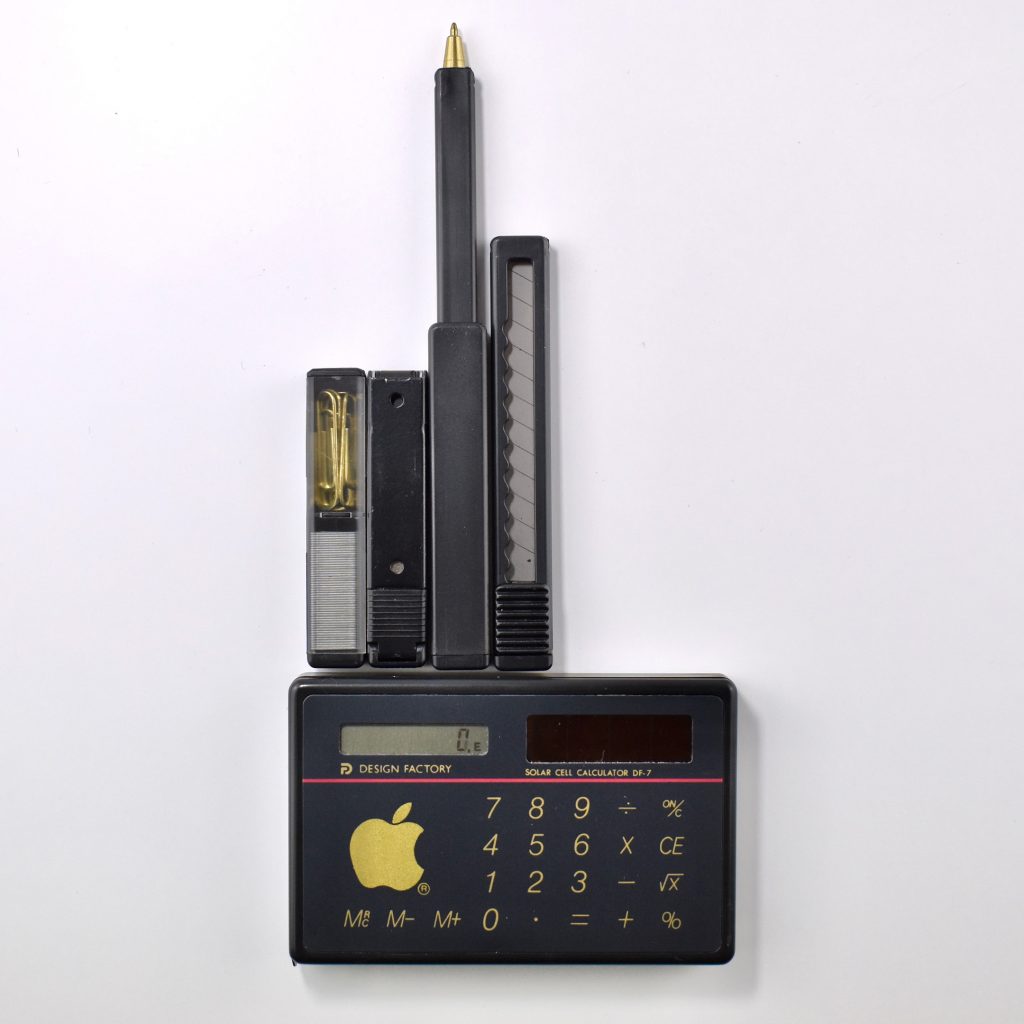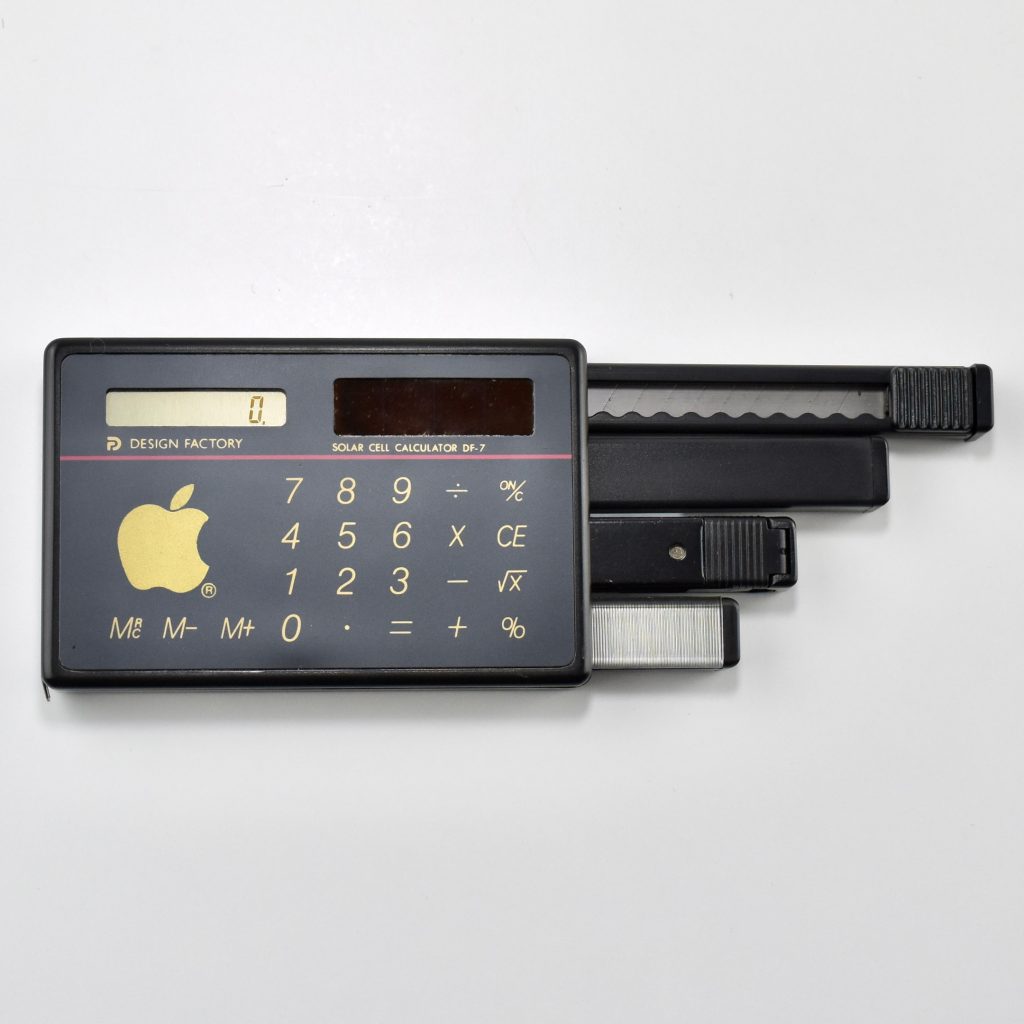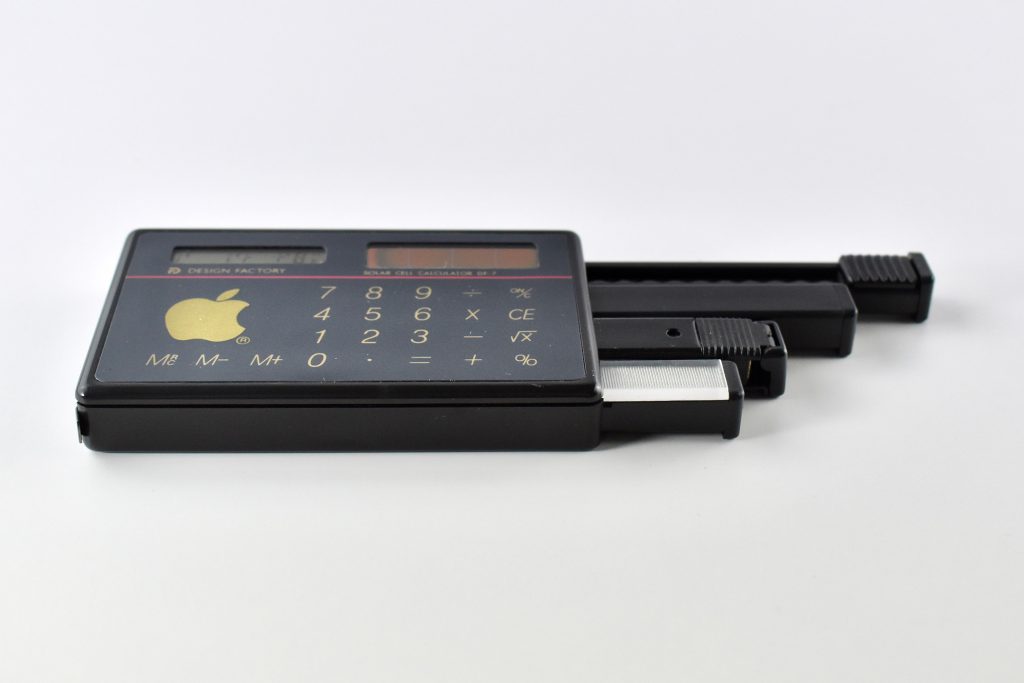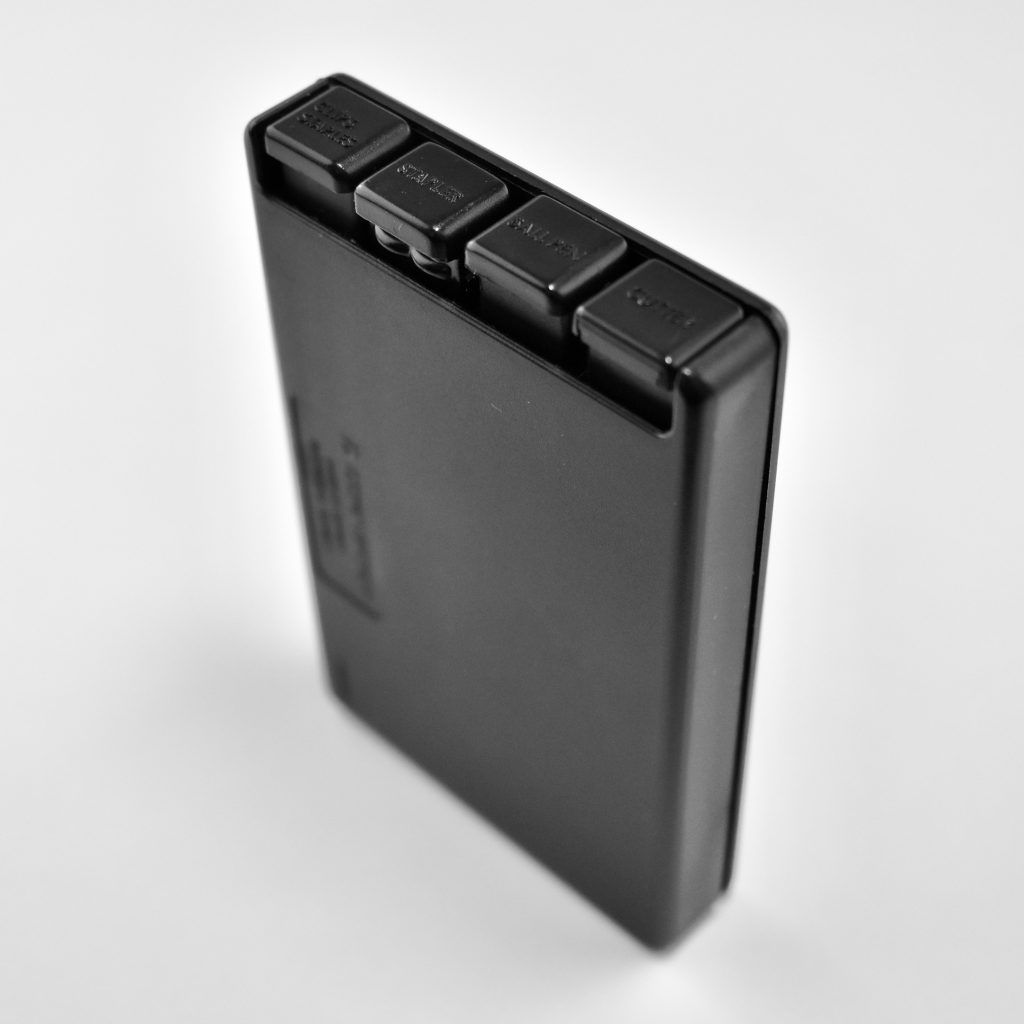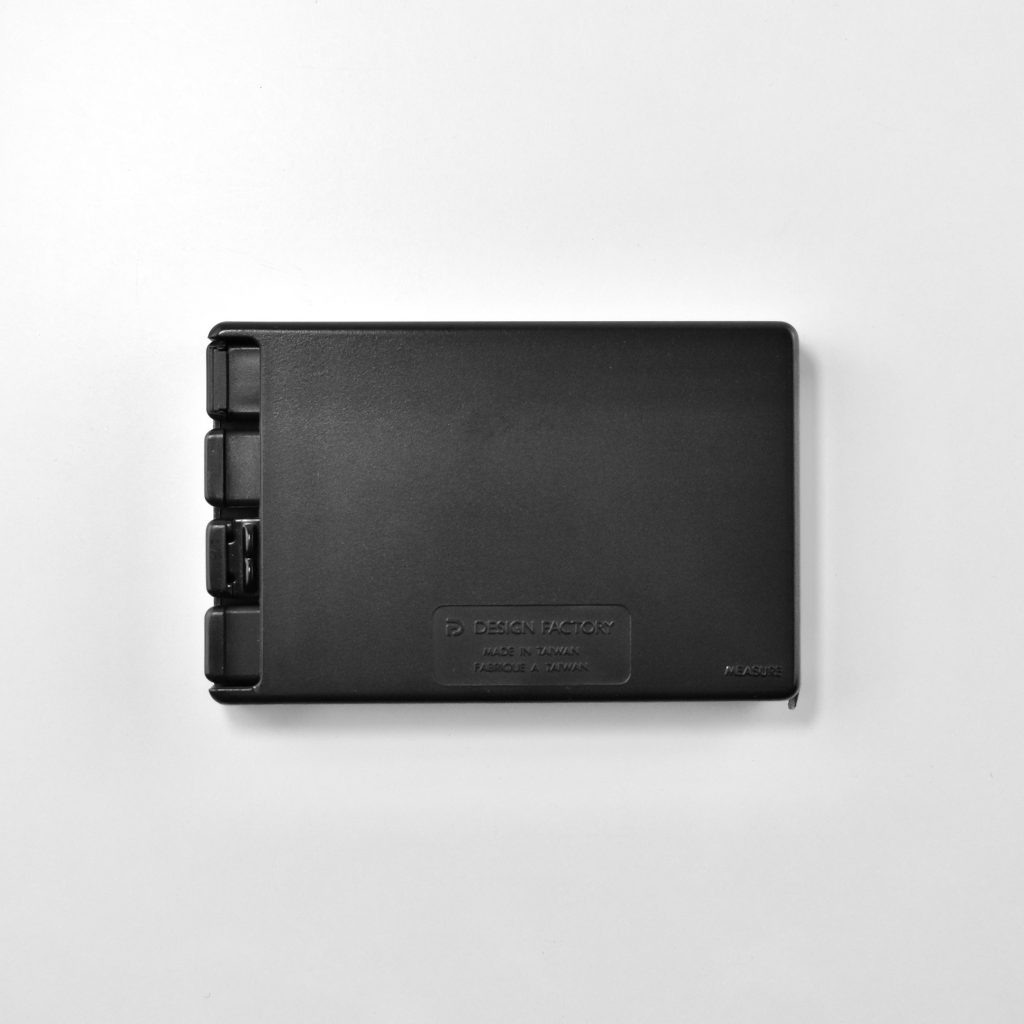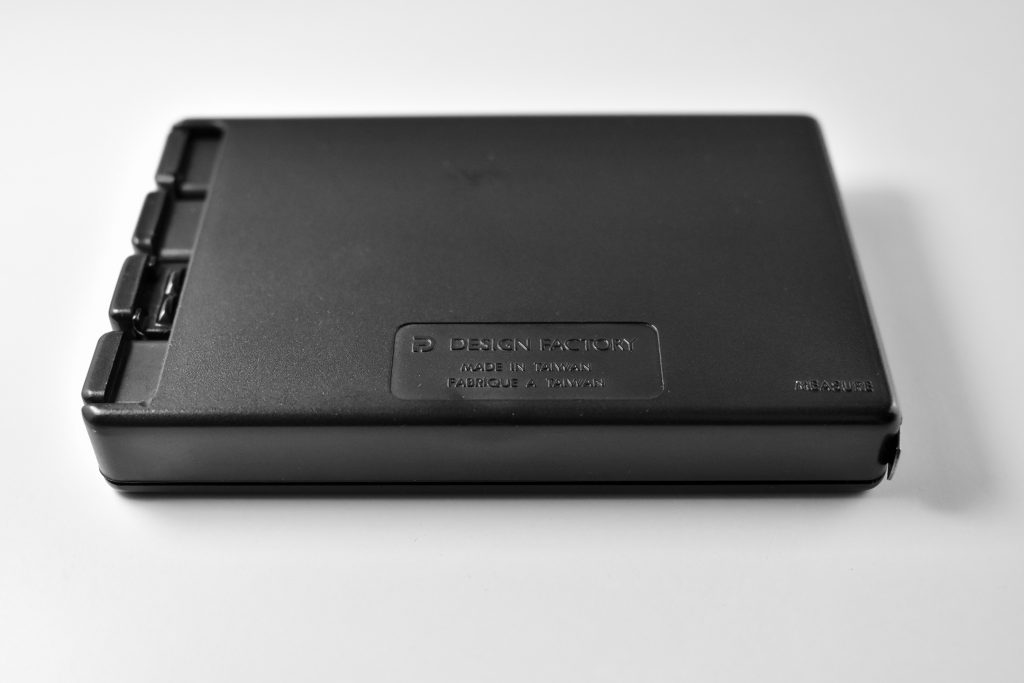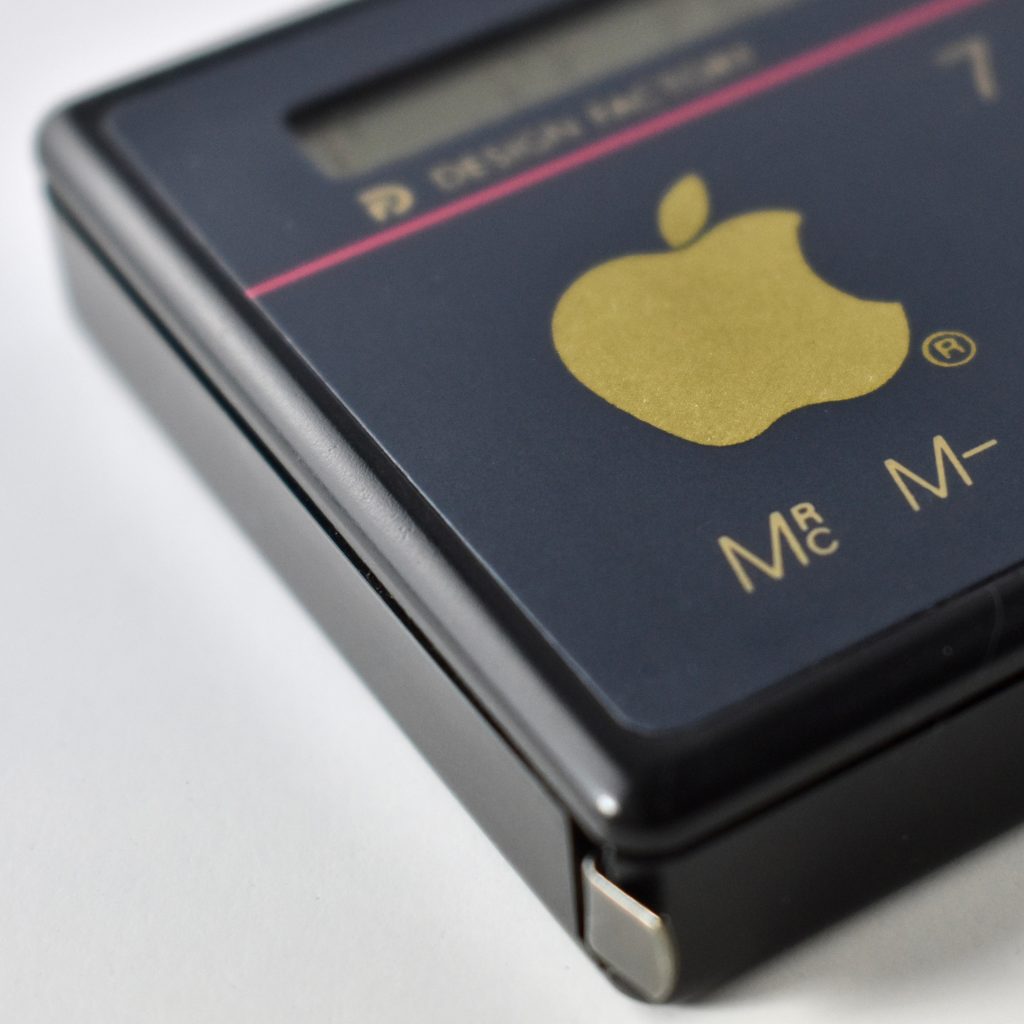This collection of CD-ROMs is part of the Apple Education Series and is titled “Multimedia Learning Tools CD Library.” The CD booklet measures 7.5 x 9.25 inches and is made of clear vinyl. It has a side attachment that allows the book to be bound in a 3-ring binder. The booklet’s front and back cover design use a beige-on-beige woodcut pattern design with a bold rectangle woodcut image in the center depicting stylized characters and multimedia icon images.
The interior front and back flap have internal pockets for paperwork. Three inside pages contain pockets that can hold 4 CDs each (2 in front and 2 in back).
The CD-ROMs in this collection include:
- MediaClips 1: Animal Kingdom, Tropical Rain Forest & Deep Voyage (Softkey, 1993–1995)
- Apple Education Series Multimedia Learning Tools (1995)
- HyperStudio (Roger Wagner, 1993–1994)
- Kid Pix (Brøderbund, 1994)
- Claris Impact 1.0 (1995)
- Avid VideoShop 3.0 (1995)
- Microsoft Bookshelf (1995)
- Famous Faces (Jasmine Multimedia, 1995)
- MultiWare Multi-Media Collection (BeachWare)
- 1995 TIme Almanac
- MacGallery, Version 1.1 (1994–1995)
- MediaClips 2: Space Odyssey, American View, & World View (Softkey, 1993–1995)
Source: Apple
